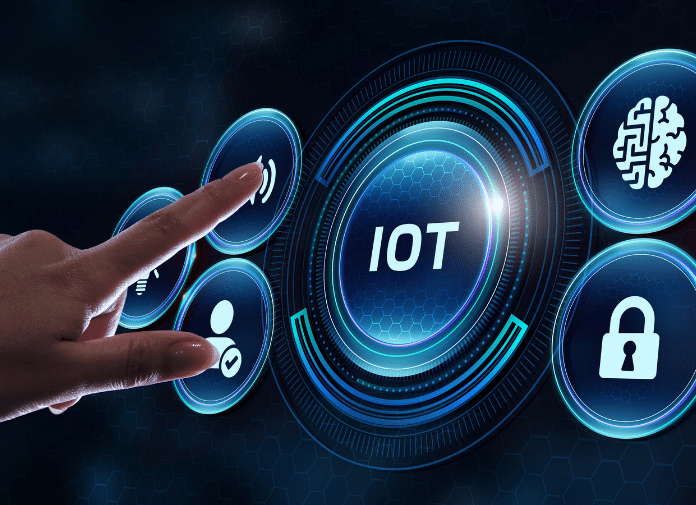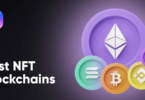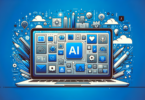The Internet of Things (IoT) has become one of the most important technology trends in recent years. With more devices connected than ever before, IoT is revolutionizing how we live, work, and interact with technology. In this article, we’ll dive into the details of IoT, explore how it works, and discuss its growing impact on various industries. From smart homes to industrial applications, IoT is transforming everything around us.
Let’s explore how this trend is shaping the future and changing the world as we know it.
What is the Internet of Things (IoT)?
At its core, the Internet of Things (IoT) refers to the interconnection of everyday objects and devices to the internet. These objects, embedded with sensors and software, can collect, share, and act on data. Everything from your refrigerator to your car can now be connected, creating a vast network of “smart” devices that communicate with one another.
But why does this matter? Well, it means a more integrated, efficient, and data-driven world where devices automate tasks, predict issues, and offer better user experiences.
How Does IoT Work?
To understand how IoT works, imagine your smartphone talking to your coffee machine in the morning. Through sensors and a Wi-Fi connection, these devices communicate with each other. IoT works by gathering data through sensors, which is then processed and shared over a network. This data can be analyzed to provide insights or automate responses.
For example, a smart thermostat learns your temperature preferences and adjusts the room climate accordingly without manual input. The real power of IoT lies in its ability to bring together various devices, making our environments smarter and more responsive to our needs.
The Rise of IoT in Everyday Life
IoT has already entered our everyday lives in significant ways. From wearable fitness trackers that monitor our health to smart refrigerators that track groceries, IoT is making tasks simpler and more convenient. Smart homes are an excellent example of IoT’s influence—lights, locks, security cameras, and thermostats are controlled from your smartphone, making life more seamless.
What’s even more exciting? IoT is not limited to personal use. It is dramatically transforming industries like healthcare, agriculture, manufacturing, and transportation. And this is just the beginning
IoT in Smart Homes: Changing How We Live
Smart homes are one of the most visible applications of IoT. Imagine coming home from work, and your house has already adjusted the temperature, turned on the lights, and brewed a fresh cup of coffee—all without you lifting a finger. That’s the power of IoT.
Smart home devices include smart speakers, security cameras, smart thermostats, and even smart kitchen appliances. These gadgets improve energy efficiency, enhance home security, and make everyday tasks more manageable. With IoT, your home becomes not just a place to live but a responsive, adaptive environment tailored to your preferences.
IoT in Healthcare: Revolutionizing Patient Care
In healthcare, IoT is a game-changer. Medical devices can now be connected, allowing doctors to monitor patients in real-time. Wearables such as smartwatches and fitness trackers provide real-time data on heart rate, sleep patterns, and physical activity.
Remote monitoring of patients, especially for those with chronic diseases, has become easier. Smart pills, which alert healthcare providers when medication has been taken, are another remarkable application of IoT in healthcare. By offering continuous, personalized care, IoT is making healthcare more efficient and accessible.
Industrial IoT: Driving Efficiency in Manufacturing
While IoT is making our homes smarter and our healthcare more responsive, it’s also revolutionizing industries. The industrial Internet of Things (IIoT) refers to the use of connected devices in industrial sectors like manufacturing, logistics, and energy.
Through sensors and advanced analytics, IIoT can monitor machinery in real-time, predicting when maintenance is required and minimizing downtime. Factories can optimize production, reduce waste, and increase efficiency, all thanks to IoT technology. For example, predictive maintenance helps companies avoid unexpected machine failures, saving both time and money.
IoT in Agriculture: Growing Smarter
Did you know that IoT is even making farming more efficient? In agriculture, IoT-powered sensors monitor soil moisture, crop health, and weather conditions. Farmers can make data-driven decisions about when to plant, water, and harvest crops, leading to higher yields and more sustainable farming practices.
Smart farming technologies allow for precise agriculture, reducing water waste and optimizing fertilizer use. The future of farming looks bright, thanks to IoT innovations that make agriculture more intelligent and sustainable.
Transportation and IoT: The Future of Smart Mobility
IoT is also transforming transportation. With connected cars, we are seeing the rise of smart vehicles that communicate with each other and their surroundings. These cars can optimize routes, reduce traffic congestion, and even predict and avoid accidents.
The potential for autonomous driving is becoming more of a reality with IoT technology. Beyond cars, IoT is improving public transportation systems, allowing cities to manage traffic more efficiently and reduce carbon emissions. The integration of IoT in transportation is paving the way for smarter, safer, and more efficient mobility solutions.
IoT and Security: Enhancing Safety and Protection
As IoT grows, so does the importance of cybersecurity. With billions of devices connected to the internet, security risks are an inherent challenge. Smart locks, cameras, and other connected devices enhance home security, but they also create new entry points for hackers.
However, the same technology that poses risks can also offer solutions. Enhanced encryption, secure protocols, and advanced authentication methods are being developed to keep IoT networks safe. Security will remain a key focus as IoT continues to expand.
Challenges Facing IoT
Despite its incredible benefits, IoT is not without challenges. Privacy concerns are among the biggest issues. With so many devices collecting data, questions about how this data is used and stored arise. Additionally, compatibility between different devices and systems can create hurdles in creating a truly interconnected environment.
However, the industry is rapidly working to address these concerns. Standardization of protocols and improvements in data security are paving the way for a safer and more efficient IoT ecosystem.
The Future of IoT: What’s Next?
The future of IoT is boundless. As more devices become interconnected, we’ll see even more innovative applications across different sectors. From smart cities with connected infrastructure to healthcare systems that provide personalized treatment plans, IoT is poised to change the world.
As 5G networks roll out globally, IoT devices will benefit from faster, more reliable connectivity, allowing for even more complex and real-time applications. Whether in industry, healthcare, agriculture, or everyday life, IoT will continue to evolve and impact how we live.
IoT and Artificial Intelligence: A Powerful Combination
One of the most exciting prospects of IoT is its integration with Artificial Intelligence (AI). By combining AI with IoT, we can create systems that not only collect data but also learn from it and make autonomous decisions.
For example, AI can analyze data from IoT devices to identify patterns, predict failures, and even automate complex processes without human intervention. This combination is creating smarter, more efficient systems across various industries.
IoT and Big Data: Unlocking Insights
The massive amount of data generated by IoT devices is also fueling the growth of Big Data analytics. Companies are using this data to gain valuable insights, improve efficiency, and enhance customer experiences. From predicting consumer behavior to optimizing supply chains, the possibilities are endless.
How IoT is Shaping the Future of Business
Businesses across all sectors are adopting IoT to stay competitive. IoT allows companies to track products, monitor customer usage, and streamline operations. For businesses, IoT means better decision-making, improved customer satisfaction, and greater operational efficiency.
From retail to logistics, IoT is transforming business models and creating new opportunities. As more businesses realize the potential of IoT, its adoption will only continue to rise.
Conclusion: The Internet of Things is Here to Stay
The Internet of Things is more than just a trend—it’s the future of technology. As more devices become interconnected, we’ll see continued innovation and new opportunities. Whether it’s making our homes smarter, improving healthcare, or transforming industries, IoT is paving the way for a more connected, data-driven world. The possibilities are endless, and the future is bright for IoT.
FAQs
1. What is IoT in simple terms?
IoT stands for the Internet of Things, which refers to the connection of everyday devices to the internet, allowing them to collect and share data.
2. How does IoT benefit businesses?
IoT helps businesses optimize operations, reduce costs, and make data-driven decisions, enhancing overall efficiency and customer satisfaction.
3. What are the main challenges of IoT?
Key challenges include privacy concerns, data security, and the lack of standardization across different devices and platforms.
4. Can IoT work without the internet?
No, IoT relies on internet connectivity to allow devices to communicate and share data.
5. How is IoT shaping the future?
IoT is creating smarter homes, transforming industries, improving healthcare, and revolutionizing transportation, making the world more connected and efficient.






